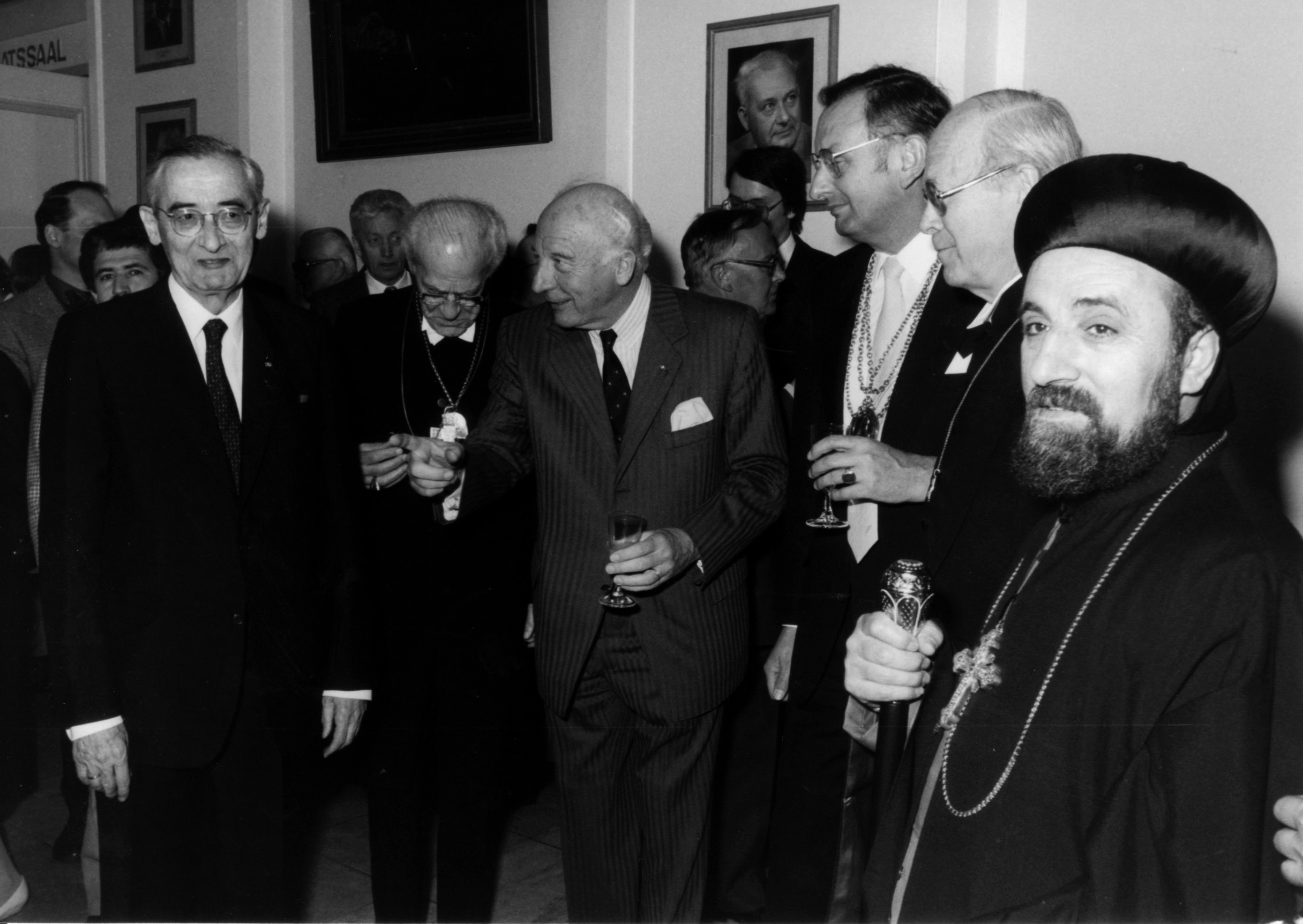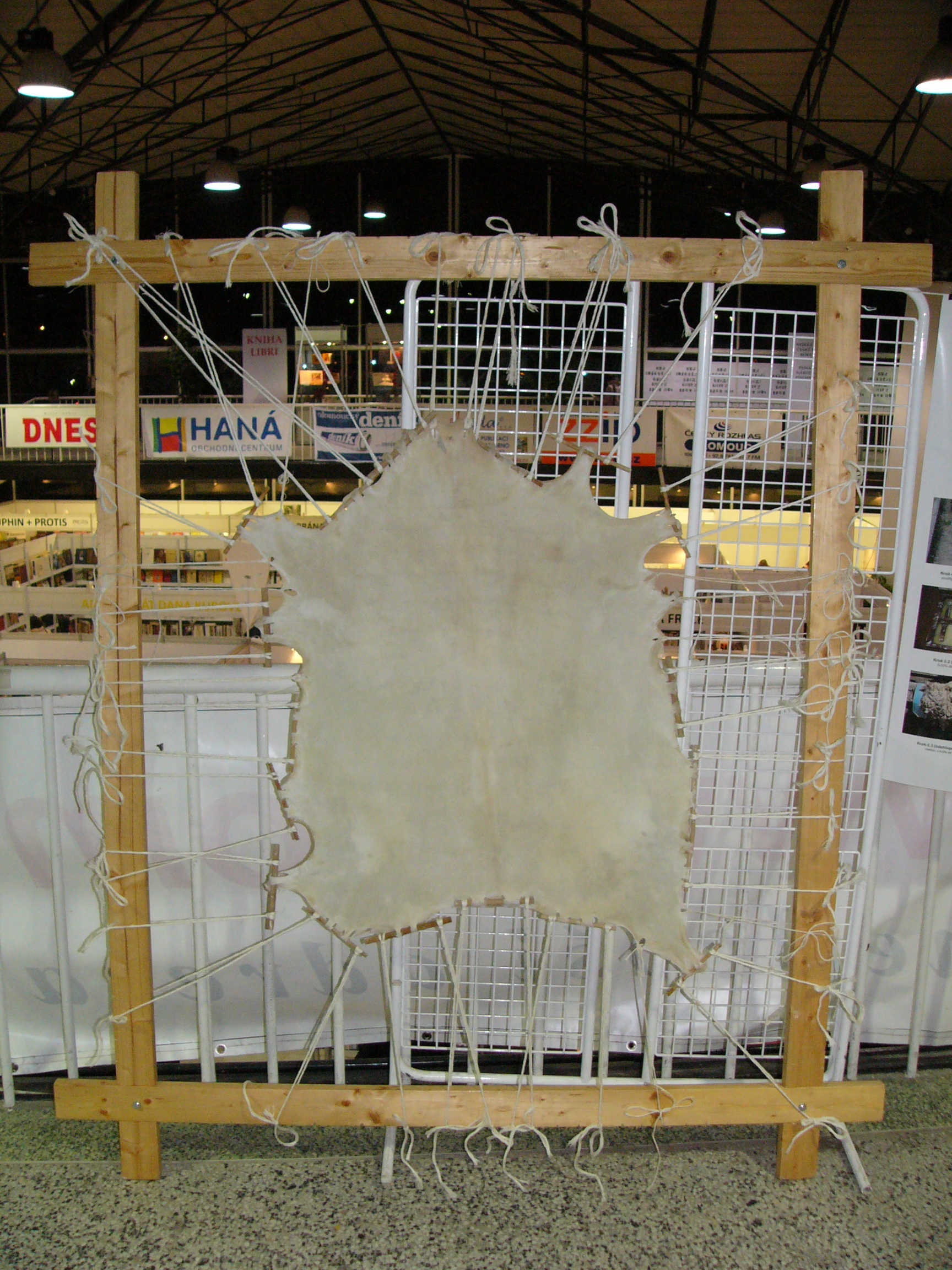|
Uncial 0187
Uncial 0187 (in the Gregory-Aland numbering), ε 024 ( Soden), is a Greek uncial manuscript of the New Testament, dated paleographically to the 6th century. Description The codex contains a small parts of the Gospel of Mark 6:30-41, on one parchment leaf (24 cm by 18 cm). It is written in two columns per page, 26 lines per page, in uncial letters. The fragment contains about 339 letters from 1044 on both sides of the leaf. The Greek text of this codex is mixed. Aland placed it in Category III. Currently it is dated by the INTF to the 6th-century. It belonged to the same manuscript as 0149. It was examined by Guglielmo Cavallo.G. Cavallo, ''Ricerche sulla maiuscola biblica'', Florence 1967, 82. 3f. The codex is currently housed at the University of Heidelberg (Pap. 1354) in Heidelberg. See also * List of New Testament uncials * Textual criticism Textual criticism is a branch of textual scholarship, philology, and literary criticism that is con ... [...More Info...] [...Related Items...] OR: [Wikipedia] [Google] [Baidu] |
Gospel Of Mark
The Gospel of Mark is the second of the four canonical Gospels and one of the three synoptic Gospels, synoptic Gospels. It tells of the ministry of Jesus from baptism of Jesus, his baptism by John the Baptist to his death, the Burial of Jesus, burial of his body, and the discovery of his empty tomb. It portrays Jesus as a teacher, an exorcist, a healer, and a Miracles of Jesus, miracle worker, though it does not mention a virgin birth of Jesus, miraculous birth or Pre-existence of Christ, divine pre-existence. Jesus refers to himself as the Son of Man. He is called the Son of God but keeps Messianic Secret, his messianic nature secret; even his Disciple (Christianity), disciples fail to understand him. All this is in keeping with the Christian interpretation of prophecy, which is believed to foretell the fate of the messiah as a suffering servant. Traditionally attributed to Mark the Evangelist, the companion of the Apostle Peter, the gospel is anonymous, and scholarship is in ... [...More Info...] [...Related Items...] OR: [Wikipedia] [Google] [Baidu] |
Codex
The codex (: codices ) was the historical ancestor format of the modern book. Technically, the vast majority of modern books use the codex format of a stack of pages bound at one edge, along the side of the text. But the term ''codex'' is now reserved for older manuscript books, which mostly used sheets of vellum, parchment, or papyrus, rather than paper. By convention, the term is also used for any Aztec codex (although the earlier examples do not actually use the codex format), Maya codices and other pre-Columbian manuscripts. Library practices have led to many European manuscripts having "codex" as part of their usual name, as with the Codex Gigas, while most do not. Modern books are divided into paperback (or softback) and those bound with stiff boards, called hardbacks. Elaborate historical bindings are called treasure bindings. At least in the Western world, the main alternative to the paged codex format for a long document was the continuous scroll, which was the ... [...More Info...] [...Related Items...] OR: [Wikipedia] [Google] [Baidu] |
Textual Criticism
Textual criticism is a branch of textual scholarship, philology, and literary criticism that is concerned with the identification of textual variants, or different versions, of either manuscripts (mss) or of printed books. Such texts may range in dates from the earliest writing in cuneiform, impressed on clay, for example, to multiple unpublished versions of a 21st-century author's work. Historically, scribes who were paid to copy documents may have been literate, but many were simply copyists, mimicking the shapes of letters without necessarily understanding what they meant. This means that unintentional alterations were common when copying manuscripts by hand. Intentional alterations may have been made as well, for example, the censoring of printed work for political, religious or cultural reasons. The objective of the textual critic's work is to provide a better understanding of the creation and historical transmission of the text and its variants. This understanding may ... [...More Info...] [...Related Items...] OR: [Wikipedia] [Google] [Baidu] |
List Of New Testament Uncials
A New Testament uncial is a section of the New Testament in Greek or Latin majuscule letters, written on parchment or vellum. This style of writing is called ''Biblical Uncial'' or ''Biblical Majuscule''. New Testament uncials are distinct from other ancient texts based on the following differences: * New Testament papyri – written on papyrus and generally more ancient * New Testament minuscules – written in minuscule letters and generally more recent * New Testament lectionaries – usually written in minuscule (but some in uncial) letters and generally more recent * New Testament uncials – written in majuscule letters, on parchment or vellum. Classification of uncials In 1751, New Testament theologian Johann Jakob Wettstein knew of only 23 uncial codices of the New Testament. By 1859, Constantin von Tischendorf had increased that number to 64 uncials, and in 1909 Caspar René Gregory enumerated 161 uncial codices. By 1963, Kurt Aland, in hi ... [...More Info...] [...Related Items...] OR: [Wikipedia] [Google] [Baidu] |
Heidelberg
Heidelberg (; ; ) is the List of cities in Baden-Württemberg by population, fifth-largest city in the States of Germany, German state of Baden-Württemberg, and with a population of about 163,000, of which roughly a quarter consists of students, it is List of cities in Germany by population, Germany's 51st-largest city. Located about south of Frankfurt, Heidelberg is part of the densely populated Rhine-Neckar, Rhine-Neckar Metropolitan Region which has its centre in Mannheim. Heidelberg is located on the Neckar River, at the point where it leaves its narrow valley between the Oden Forest and the Kleiner Odenwald, Little Oden Forest, and enters the wide Upper Rhine Plain. The old town lies in the valley, the end of which is flanked by the Königstuhl (Odenwald), Königstuhl in the south and the Heiligenberg (Heidelberg), Heiligenberg in the north. The majority of the population lives in the districts west of the mountains in the Upper Rhine Plain, into which the city has expan ... [...More Info...] [...Related Items...] OR: [Wikipedia] [Google] [Baidu] |
Guglielmo Cavallo
Guglielmo Cavallo (born 18 August 1938 in Carovigno) is an Italian palaeographer and Byzantinist, Emeritus Professor of the Sapienza University of Rome. Life Cavallo graduated from the University of Bari in 1961, tutored by Carlo Ferdinando Russo; shortly after, he became assistant of Alessandro Pratesi, then Professor of palaeography and diplomatic. In 1969, he moved to Rome and first became assistant of Greek Palaeography at the Special School for Archivists and Librarians (then Professor of Latin paleography since 1975), also teaching 'Storia della tradizione manoscritta' (History of the manuscript tradition) at the 'Sapienza' University of Rome. In 1978, he became Professor of Greek Palaeography in Rome. He retired from his teaching duties in 2008 and was nominated Emeritus. As of 2022, he is the President of the Comitato per l'edizione nazionale dei classici greci e latini (i.e. 'Committee for the National Edition of Greek and Latin Classical exts) and Coordinator of i ... [...More Info...] [...Related Items...] OR: [Wikipedia] [Google] [Baidu] |
INTF
The Institute for New Testament Textual Research ( — INTF) at the University of Münster, Westphalia, Germany, is to research the textual history of the New Testament and to reconstruct its Greek initial text on the basis of the entire manuscript tradition, the early translations and patristic citations; furthermore the preparation of an ''Editio Critica Maior'' based on the entire tradition of the New Testament in Greek manuscripts, early versions and New Testament quotations in ancient Christian literature. Under Kurt Aland's supervision, the INTF collected almost the entire material that was needed. The manuscript count in 1950 was 4250, in 1983, 5460, and in 2017 approximately 5800 manuscripts. Moreover, INTF produces several more editions and a variety of tools for New Testament scholarship, including the concise editions known as the "Nestle–Aland" – ''Novum Testamentum Graece'' and the UBS Greek New Testament. Many of the results are also available to the wider pu ... [...More Info...] [...Related Items...] OR: [Wikipedia] [Google] [Baidu] |
Categories Of New Testament Manuscripts
New Testament manuscripts in Greek can be categorized into five theoretical groups, according to a schema introduced in 1981 by Kurt and Barbara Aland in ''The Text of the New Testament''. The categories are based on how each manuscript relates to the various theorized text-types. Generally speaking, earlier Alexandrian manuscripts are category I, while later Byzantine manuscripts are category V. Aland's method involved considering 1000 passages where the Byzantine text differs from non-Byzantine text. The Alands did not select their 1000 readings from all of the NT books; for example, none were drawn from Matthew and Luke. Description of categories The Alands' categories do not simply correspond to the text-types; all they do is demonstrate the 'Byzantine-ness' of a particular text; that is, how much it is similar to the Byzantine text-type, from least (Category I) to most similar (Category V). Category V can be equated with the Byzantine text-type, but the other categori ... [...More Info...] [...Related Items...] OR: [Wikipedia] [Google] [Baidu] |
Kurt Aland
Kurt Aland (28 March 1915 – 13 April 1994) was a German theologian and Biblical studies, biblical scholar who specialized in New Testament textual criticism. He founded the ''Institute for New Testament Textual Research, Institut für neutestamentliche Textforschung'' (Institute for New Testament Textual Research) in Münster and served as its first director from 1959 to 1983. He was one of the principal editors of ''Novum Testamentum Graece#Editions, Nestle–Aland – Novum Testamentum Graece'' for the Deutsche Bibelgesellschaft and ''Novum Testamentum Graece#Editions, The Greek New Testament'' for the United Bible Societies. Life Aland was born in Berlin-Steglitz. He started studying theology in 1933 at the Humboldt University of Berlin, Friedrich-Wilhelms-Universität in Berlin (he also studied philology, archaeology, and history). On 23 March that year, he was examined before the ''Bruderrat'' (council of brothers) in the ''Bekennende Kirche'' (Confessing Church). Durin ... [...More Info...] [...Related Items...] OR: [Wikipedia] [Google] [Baidu] |
Parchment
Parchment is a writing material made from specially prepared Tanning (leather), untanned skins of animals—primarily sheep, calves and goats. It has been used as a writing medium in West Asia and Europe for more than two millennia. By AD 400 most literature in these regions that was intended for preservation began to be transferred from papyrus to parchment. ''Vellum'' is a finer-quality parchment made from the skins of young animals such as lambs and young calves. The generic term ''animal membrane'' is sometimes used by libraries and museums that wish to avoid distinguishing between parchment and vellum. Parchment and vellum Today the term ''parchment'' is often used in non-technical contexts to refer to any animal skin, particularly goat, sheep or cow, that has been scraped or dried under tension. The term originally referred only to the skin of sheep and, occasionally, goats. The equivalent material made from calfskin, which was of finer quality, was known as ''vellum'' ... [...More Info...] [...Related Items...] OR: [Wikipedia] [Google] [Baidu] |
Greek Language
Greek (, ; , ) is an Indo-European languages, Indo-European language, constituting an independent Hellenic languages, Hellenic branch within the Indo-European language family. It is native to Greece, Cyprus, Italy (in Calabria and Salento), southern Albania, and other regions of the Balkans, Caucasus, the Black Sea coast, Asia Minor, and the Eastern Mediterranean. It has the list of languages by first written accounts, longest documented history of any Indo-European language, spanning at least 3,400 years of written records. Its writing system is the Greek alphabet, which has been used for approximately 2,800 years; previously, Greek was recorded in writing systems such as Linear B and the Cypriot syllabary. The Greek language holds a very important place in the history of the Western world. Beginning with the epics of Homer, ancient Greek literature includes many works of lasting importance in the European canon. Greek is also the language in which many of the foundational texts ... [...More Info...] [...Related Items...] OR: [Wikipedia] [Google] [Baidu] |
William B
William is a masculine given name of Germanic origin. It became popular in England after the Norman conquest in 1066,All Things William"Meaning & Origin of the Name"/ref> and remained so throughout the Middle Ages and into the modern era. It is sometimes abbreviated "Wm." Shortened familiar versions in English include Will or Wil, Wills, Willy, Willie, Bill, Billie, and Billy. A common Irish form is Liam. Scottish diminutives include Wull, Willie or Wullie (as in Oor Wullie). Female forms include Willa, Willemina, Wilma and Wilhelmina. Etymology William is related to the German given name ''Wilhelm''. Both ultimately descend from Proto-Germanic ''*Wiljahelmaz'', with a direct cognate also in the Old Norse name ''Vilhjalmr'' and a West Germanic borrowing into Medieval Latin ''Willelmus''. The Proto-Germanic name is a compound of *''wiljô'' "will, wish, desire" and *''helmaz'' "helm, helmet".Hanks, Hardcastle and Hodges, ''Oxford Dictionary of First Names'', Oxfor ... [...More Info...] [...Related Items...] OR: [Wikipedia] [Google] [Baidu] |







